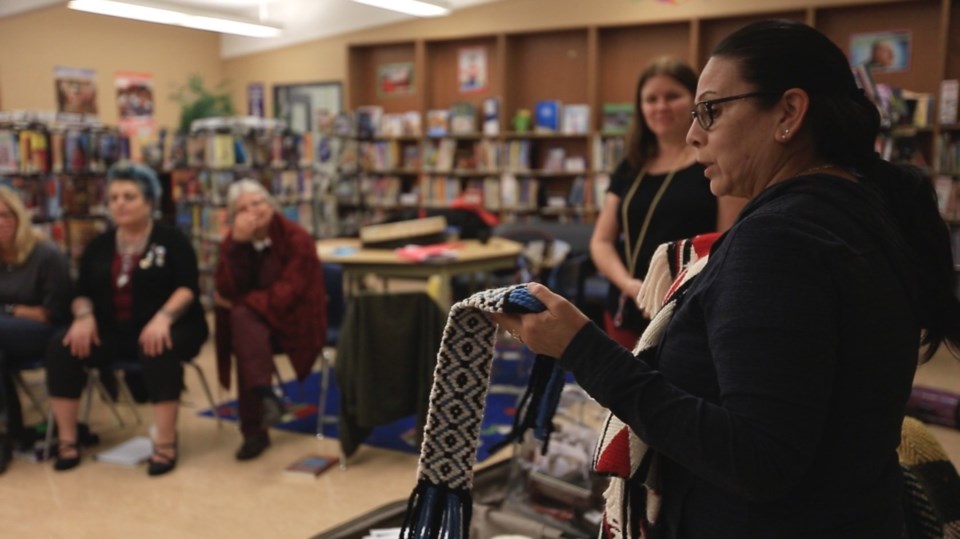For Anjeanette Dawson, Spelex瘫ílh of the S岣祑x瘫wú7mesh Úxwumixw (樱桃视频Nation), her culture “kept her alive.”
Today, she is focused on restoring the nearly forgotten tradition of Indigenous wool weaving by teaching it to a new generation.
Through workshops and school programs, Dawson teaches the craft once practiced with fibres from the woolly dog, an animal now lost to colonization. “Working with woolly dog hair isn’t possible anymore,” Dawson says.
“It’s not available anywhere,” she added.
“The closest we get today is sheep fibre.”
The disappearance of the woolly dog
Once a staple for her people, the woolly dog provided crucial material for weaving, but it vanished alongside other cultural elements with the arrival of settlers.
According to a study in the , the woolly dog became extinct in the 19th century as settlers introduced sheep, which contributed to the loss of Indigenous weaving materials.
“The woolly dog was one of the many things we lost through colonization,” she said. “It is heartbreaking.”
The wool from these dogs, mixed with other natural fibres like mountain goat wool, was traditionally spun and dyed for weaving.
“Just like the mountain goat, their numbers were high, but they dwindled after contact.”
Teaching for the Future
Dawson began weaving in 2004 under the guidance of Buddy Willard Joseph and Chief Janice George, who had studied with weaver Susan Pavel. “There were no weavers in our community at that time,” Dawson said. “We started by making tunics for children at our Capilano preschool.”
“I’d never been an artist before, but weaving felt natural to me,” she said.
This eventually led to her creating large blankets, including one displayed at the 樱桃视频Lil'wat Cultural Centre during the 2010 Winter Olympics.
Weaving, however, was not part of Dawson’s upbringing. Her parents were residential school survivors, and much of their culture was left behind.
“It wasn’t even mentioned, thought of, or heard about,” Dawson said. “My parents were survivors, and a lot of that wasn’t shared or passed down.”
She didn’t hear the term "residential school" until she was 15.
According to the , the residential school system forcibly removed over 150,000 Indigenous children from their families, severing cultural ties for generations.
Bridging Generations
Despite her late start, weaving became a vital part of Dawson’s life, not just as an art form but as a way to reconnect with her heritage. She now passes this knowledge on to others.
“I always finish my workshops with weaving,” she said. “It lifts people’s spirits. The stuff we talk about is heavy, but weaving gives them something positive to leave with.”
In her workshops, Dawson teaches participants to create “quarter bags” using cardboard looms. “I’ve taught this project to over 5,000 people, from the youngest to the oldest,” she said. “Weaving is more than just an art—it’s math, it’s history, it’s textiles.”
Traditional materials like woolly dog hair are long gone and mountain goat wool remains hard to come by.
“We don’t have enough mountain goats to accommodate the number of weavers today,” Dawson said. “It would take decades to gather enough fibre to create a blanket like we used to.”
For Dawson, weaving isn’t just about preserving culture—it’s about healing from intergenerational trauma.
“I moved away for 12 years to find clarity and ensure my children didn’t experience the same trauma I did,” she said.
Both Dawson and her husband were determined to create a different environment for their children.
“Reconciliation isn’t just a word,” she said. “It’s something we live and work toward every day.”
Bhagyashree Chatterjee is The 樱桃视频’s Indigenous and civic affairs reporter. This reporting beat is made possible by the .




